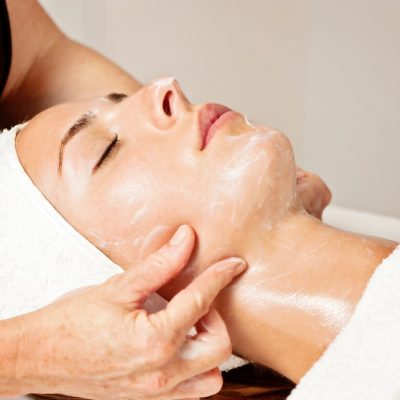While products that address dry scalp and hair problems are more prominently advertised in the beauty industry, that doesn’t mean oily hair or scalp is any less of a problem. Excess oil in the hair can be caused by several different factors, so it is important to understand the scalp’s natural process of producing oil and how that can be disrupted.
Wherever you find hair follicles, you will also find sebaceous glands. These are microscopic glands below our skin responsible for producing sebum, the oil that is necessary for proper hydration and protection of our skin and hair. Sebum itself is not a bad thing; in fact it’s what gives healthy hair its beautiful shine. The problem arises when these glands produce too much sebum, leaving the scalp and hair too greasy. It is this overproduction that is frequently misdiagnosed and treated improperly. Oftentimes, the underlying cause of excess oil is actually a dry scalp. This dryness signals the glands in your scalp to start producing more sebum, which can easily get out of hand.
The medical term for excessive sebum production is seborrhea, and it can be caused by several different factors:
Puberty: This is the peak period for sebum production.
Menstrual cycles, birth control pills, pregnancy, or menopause: Sebum production naturally increases in tandem with these causes of hormonal changes in women.
Your personal care routine: As previously mentioned, a dry scalp can lead to an overproduction of oil. Skipping conditioner or overusing a clarifying shampoo in the hopes of avoiding greasiness could actually be exacerbating the problem. Excess scrubbing or shampooing too frequently can irritate the scalp. Too much heat, whether from styling routines or even the water temperature in your shower, can also lead to hair and scalp dryness.
Hair type (thin): Those with fine hair have more individual hairs per square inch, which means more follicles and more sebaceous glands. Also, it is much easier for fine hair to appear limp or greasy.
Hair type (thick and curly): Curls can prevent the even distribution of sebum throughout the hair shaft, leading to hair that appears greasy at the roots and dry or dull at the ends.
Hair length: Shorter hair has less surface area for the sebum to travel down the length of the hair shaft, so grease and oils can build up faster and become pronounced more easily.
Genetic predisposition: Higher oil production can be hereditary
Medical conditions: Psoriasis, thyroid problems
Diet: Foods rich in B vitamins (fish, lean meat, nuts, and dark leafy greens) help combat greasy hair by regulating sebum production. Zinc supplements, in conjunction with vitamin B6 for proper absorption, have also been shown to regulate sebum production. Foods to avoid include those containing refined carbohydrates, trans fats, saturated fats, or dairy hormones.
The first reaction to an excessively oily scalp is often to wash it more frequently. This is actually the opposite of what you should do. Whether the cause of your overactive sebaceous glands is natural hormonal changes or health problems, your oily scalp becomes a vicious cycle: frequent washing strips the hair of its natural sebum, your scalp’s response is to go into overdrive to replace that natural oil, and the result is hair that feels and looks greasy even though you feel like you just washed it.
The symptoms of an oily scalp certainly start with an undesirable appearance but can include several other problems:
Dandruff: itchy or flaky scalps can be uncomfortable as well as unsightly.
Seborrheic dermatitis: the buildup of oil causes inflammation of the skin, leading to a scalp that is red, irritated, flaky and itchy.
Scalp acne: the excess oil attracts more dirt, which can clog pores and lead to breakouts.
Hair loss: The itching and scratching that goes along with many of these other symptoms can lead to hair follicle breakage and hair loss.
The best response to an oily scalp problem is to consult a professional Hair & Scalp Specialist, who can provide an in-depth consultation and recommend the proper treatments and help you structure a home maintenance regimen that is tailored to your needs and abilities.





